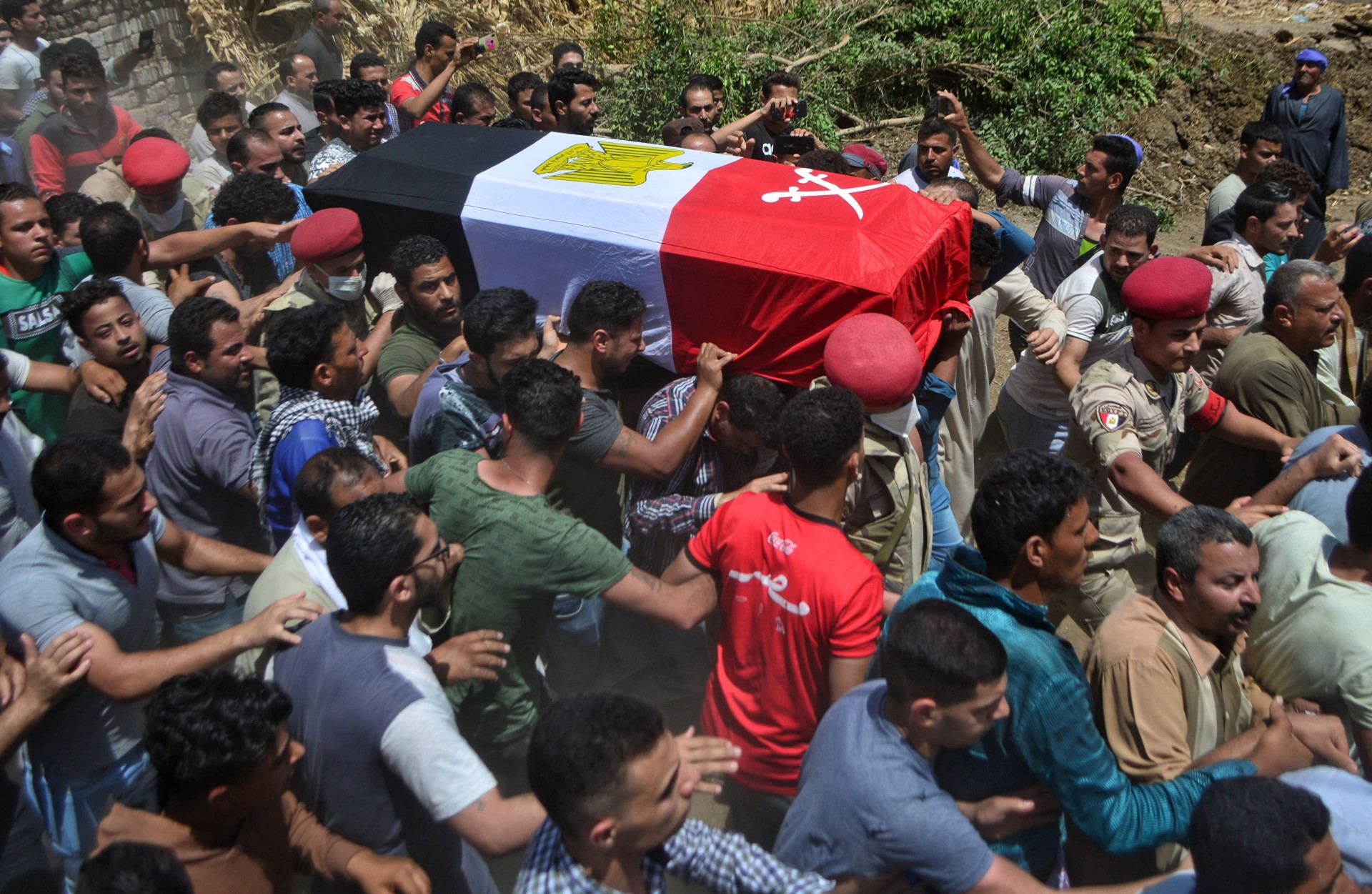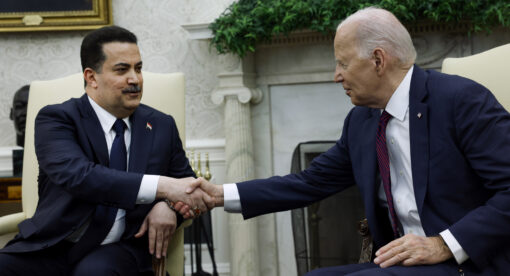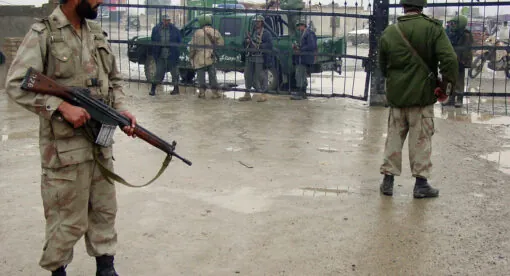Editor’s Note: This Terrain Analysis is part 11 of “ISIS 2020” – a series of briefings about the current status of the Islamic State by authors from different parts of the region. It is published by the Newlines Institute’s Nonstate Actors program. Parts one, two, three, four, five, six, seven, eight, nine, and ten were released on April 28, May 5, May 12, May 19, May 26, June 2, June 4, June 9, and June 16, respectively.
Situation Summary
On May 30, Islamic State (ISIS)-affiliated militants in Egypt’s North Sinai province carried out an IED attack on a military convoy in the central part of the province, killing a lieutenant colonel in the Egyptian armed forces. Less than two weeks later, militants tortured and killed a Bedouin elder in the province, tying the 75-year old man to a pole and setting off explosives, the latest in retributive violence against pro-government tribes. These attacks are all the more notable as the U.S. Congress weighs the value of continuing to provide its annual $1.2 billion in foreign military financing to Egypt. While congressional concerns have primarily centered on human rights violations such as the death of American citizen Mustafa Kassem in an Egyptian prison in January, there have been growing frustrations about perceived failures to address a terrorist threat in North Sinai and regarding the United States’ lack of visibility on how its military equipment is being used in the area.
Over the past year, the Islamic State has maintained its activities in Egypt through its “Sinai Province,” or Wilayat Sinai. Even after nearly six years of sustained activity from the Egyptian Armed Forces’ second and third field armies, with help from Israeli forces, Wilayat Sinai remains an active threat. Sustained military operations that took place throughout 2018 as part of the Egyptian Armed Forces’ Comprehensive Operation Sinai 2018, which included joint operations with Ministry of Interior forces, were successful in reducing militant capabilities and in neutralizing key leadership figures in the organization. However, almost immediately upon reducing the intensity of operations, Wilayat Sinai resumed a steady rate of attacks throughout 2019 and into this year. The group has claimed 234 attacks in the past 12 months, with nearly 600 civilian and security force casualties, including high-ranking security officials.

The organization originated in 2011 under the name Ansar Bayt al-Maqdis before pledging its allegiance to the Islamic State in 2014 and becoming Wilayat Sinai. Though the group’s declared intention is to fight for the ultimate goal of establishing an Islamic caliphate, its immediate strategic aim is to dispel Egyptian armed forces from North Sinai. Thus, though it remains part of the larger Islamic State umbrella, the group’s focus is decidedly local; even attacks in Cairo, which have virtually ceased, tended to be claimed by the Islamic State’s Egypt branch rather than Wilayat Sinai. A steady pace of attacks, the sporadic establishment of temporary checkpoints, and the Egyptian Armed Forces’ engagement of tribal militias (which declare themselves to be a coordinated entity as the “Union of Sinai Tribes”) suggest that, while the Egyptian military has succeeded in containing the threat to the northeastern part of the peninsula, the activity of militants has achieved a status quo whereby the militants remain an active but contained threat and the conflict bodes to continue as a localized fight.
Kinetic Trends
Wilayat Sinai has claimed around 100 attacks thus far in 2020. Well over a third of these attacks have been carried out with improvised explosive devices. Most coordinated attacks feature light weaponry with suicide IEDs, though the group does occasionally employ rocket-propelled grenades and mortars. Attacks frequently target military equipment with roadside IEDs, as well as Egyptian military construction equipment and at least one attack on the Israeli gas pipeline in February.
Of these attacks, the vast majority remain concentrated in the eastern part of the province, near the Gazan border. This year, however, has seen at least 10 attacks take place in the area around Bir al-Abd to the west, on the routes toward the Suez Canal. Notably among these, a brigadier general was killed in a Feb. 12 attack near the village of Rawda.
Kidnapping and execution of those accused of cooperation with the military has been a mainstay — at least nine civilians have been killed in targeted assassinations this year. In an as-yet unclaimed May 18 raid in the village of Qabir Omair near Sheikh Zuweid, militants botched an attempt to kidnap villagers suspected of working with security forces and opened fire on a family breaking fast, killing three. Often, individuals are apprehended at temporary checkpoints established by Wilayat Sinai, which indicates some continued freedom of movement in the province, though less so than was seen between 2015 and 2017.
It is difficult to get accurate information on the numbers of attacks and fatalities in North Sinai. The totals here are based on individual claims reported through the Islamic State media — meaning largely from individual attack claims issued through the Amaq channel. Often, the Naba weekly newsletter issued by the Islamic State will provide higher casualty totals; at times the newsletter includes attacks not claimed throughout the week. A sum of claims there totals 234 casualties in the province since the beginning of the year. Serious reporting restrictions limit any ability to independently verify these claims. A few outlets report based on contacts with sources on the ground in North Sinai, and some — like Al Manassa or Mada Masr — provide insights into the environment there. However, without regular access to the territory, investigating details of deaths in these attacks is difficult. Furthermore, Egyptian anti-terror legislation criminalizes reporting figures outside of those that the government reports. While exact counts may be inaccessible, the reports provided still tell the same story of consistent loss of life and property on the part of the Egyptian military.
The military has enlisted the help of civilians in Sinai, appealing to locals frustrated with militant presence to provide intelligence and providing arms and financial resources. These efforts have seen the formation of small, army-backed militias, which may engage alongside the Egyptian military or independently. Reports have indicated the presence of these civilian forces across the province, including as far south as Hasakah. This collaboration mirrors some tribal dynamics in the province: Elements of some tribes have given material or symbolic support to the military’s efforts, others have shifted alliances at different points in the conflict, and still others have remained more neutral. Ramailat, Sawarka, and Tarabin tribesmen have most visibly and actively supported the military’s efforts and have been those most targeted by Wilayat Sinai in retaliation (the group sometimes refers to these as “Sahwat” forces, named for the Sahwa or “Awakening” Councils made up of Sunnis that fought the Islamic State in Iraq between 2005 and 2008.
Media Presence
As with its other counterparts, Wilayat Sinai features visual content as a way of transmitting its activities — as Ansar Bayt al-Maqdis and in the period immediately following its joining the larger ISIS umbrella, the group had less-sophisticated graphic capabilities, poor English translations, and varied designs. In the past years, however, and up to now, it has featured photo and video documentation in the style of its counterparts elsewhere.
In the past months, Wilayat Sinai media content has depicted both footage of attacks as well as its social activity. Through the ISIS central media arm, a photo series of Wilayat Sinai fighters, including a child, celebrating Ramadan was released May 12.
Outlook
While some discussion has recently developed around the U.S. Department of Defense’s consideration of the withdrawal of U.S. troops from the Multinational Force of Observers, the force presence does not have bearing on the trajectory of the conflict. The force has reduced its footprint in the areas where conflict between military and militants occurs, particularly since 2016, when it removed personnel from some of its remote sites and shifted its headquarters to the south. Substantial resistance to the withdrawal of the troops, whose mandate is to monitor the peace treaty between Israel and Egypt, has come from the U.S. Congress and elsewhere. While Egypt and Israel are widely understood to collaborate over intelligence and operations along the Gazan border (including several documentations of Israeli presence in Egyptian airspace), U.S. troops are likely to remain.
Despite the confluence of interests in resolving the militant presence in North Sinai, and despite ambitious campaigns declared with the ostensible aim of eradicating terrorism, the Egyptian military’s strategy has largely been one of containment, seeking to limit attacks to the northeastern portion of the Sinai peninsula. This strategy is evident in the continued — and at times extreme — restriction of movement that has characterized the military’s presence since 2014. The strategy has been largely effective, with no attacks in the southern, more touristic area of Sinai nor any attacks in the delta this year. The creep of attacks west toward the Suez Canal may provide some cause for concern, though no attacks have come within striking distance of either the Canal or the tourist areas in the south of the peninsula for years.

In 2015, Egyptian President Abdel Fattah el-Sisi issued a mandate to create a unified command that would ostensibly allow for more strategic operations in the area east of the Suez canal, bringing the second and third field armies operating in the peninsula under one charge (this also marked a greater flexibility in territorial boundaries between the two field armies). Despite this, since the end of the last major military campaign (Comprehensive Operation Sinai 2018, which wrapped up late in that year), kinetic operations are generally carried out and publicized in retaliation for notably deadly militant attacks. While these operations are at times reported to be highly deadly, killing dozens of alleged Wilayat Sinai fighters at a time, their veracity is questionable. If true, the claims indicate that Wilayat Sinai has maintained the ability to replenish its troops at an astounding rate, adding and training hundreds of fighters to its ranks every few months. While it is evident that some foreign fighters have entered the province (notably, martyrdom claims mention fighters from Gaza and the Caucasus), it is more likely, particularly given the evidence of extrajudicial killings, that the military’s claims are inflated, likely overstating the number of individuals killed and possibly including civilians not engaged in combat.
Heavy Egyptian Armed Forces presence and sustained operations over the past years, as well as restrictions on movement into, out of, and around the province, have limited Wilayat Sinai’s ability to expand into a force able to hold territory like its counterparts elsewhere in the region. Yet the group has shown its resilience, carrying out regular attacks on under prepared military conscripts throughout the northeast and operating with little resources. As long as the military is able to contain the group to North Sinai, and particularly amidst a pandemic that will continue to demand the attention of Egypt’s military leadership, there are no real signs for major change to this threat environment in the months to come.
Allison McManus is a senior fellow at the Newlines Institute. She previously served for six years as the research director for the Tahrir Institute for Middle East Policy, where she ran the Egypt Security Watch project. She Tweets at @allisonlmcmanus.
The views expressed in this article are those of the author and not an official policy or position of the Newlines Institute.
Editor’s Note: This piece initially contained an error that has been corrected regarding the Multinational Force and Observers (MFO) and its presence in the Sinai. The piece originally stated that the MFO had closed its northern base and operated far from ISIS’s area of operations. The MFO continues its operations there at camps in the north and south and in remote areas. We regret the error. (June 24, 2020)







